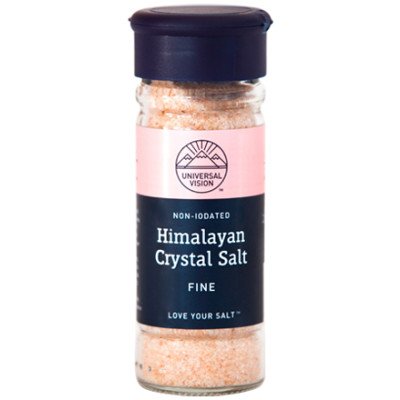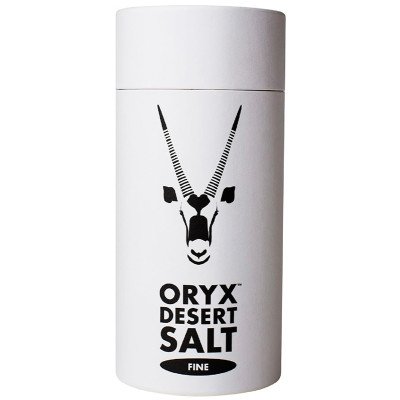When it comes to seasoning our food, salt is a staple in every kitchen. But did you know that not all salts are created equal? From Celtic Sea Salt to Himalayan Salt, there are plenty of natural options that offer more than just flavor.
While all salt is, well, salt, there are significant differences between types of salt. Table salt, sea salt, Himalayan pink salt, Celtic sea salt, and other varieties may have distinct textures, flavors, and mineral profiles. Celtic sea salt, in particular, is harvested by hand from the surface of salt pans in France and is often rich in minerals like iron, zinc, and potassium.
The Benefits of Natural Salts
Natural salts like Celtic Sea Salt, Desert Salt, and Himalayan Salt offer a range of benefits, including:
Mineral-rich: These salts contain essential minerals like iron, zinc, and potassium that can help support overall health.
Digestive benefits: The minerals in natural salts can help boost digestion and alleviate symptoms of irritable bowel syndrome (IBS).
Skin benefits: The magnesium and plankton in some natural salts can help rejuvenate the skin and reduce inflammation.
Air-purifying properties: Some natural salts, like Himalayan Salt, are believed to have air-purifying properties, although this is debated.The Wonderful World of Salts: A Deep Dive into Each Type
Let’s explore each type of salt in more detail, including their characteristics, flavor profiles, and culinary uses.
Celtic Sea Salt
Harvesting process: Celtic Sea Salt is harvested by hand from the surface of salt pans in France. The salt pans are filled with seawater, which is then left to evaporate, leaving behind a layer of salt.
Mineral-rich profile: Celtic Sea Salt contains 84 minerals, including iron, zinc, and potassium. These minerals can help support overall health and well-being.
Digestive benefits: The minerals in Celtic Sea Salt can help boost digestion and alleviate symptoms of irritable bowel syndrome (IBS).
Skin benefits: The magnesium and plankton in Celtic Sea Salt can help rejuvenate the skin and reduce inflammation.

Himalayan Salt
Mining process: Himalayan Salt is mined from the Khewra Salt Mines in Pakistan (These used to be under the sea!). The mines are located in the foothills of the Himalayan Mountains.
Pink in color: Himalayan Salt is known for its distinctive pink color, which is due to its high iron content.
Mineral-rich profile: Himalayan Salt contains over 80 minerals, including iron, potassium, and magnesium. These minerals can help support overall health and well-being.
Air-purifying properties: Some proponents claim that Himalayan Salt has air-purifying properties, although this is debated. It’s believed to help remove pollutants and allergens from the air.

Desert Salt
Harvesting process: Desert Salt is harvested from ancient salt deposits in the mountains. The salt is often mined from underground deposits or harvested from surface deposits.
Pure and natural: Desert Salt is often free from additives and pollutants found in regular table salt. It’s a popular choice for those looking for a natural and pure salt option.
Mineral profile: Desert Salt contains a range of minerals, including calcium, magnesium, and potassium. These minerals can help support overall health and well-being.
Unique flavor: Desert Salt has a distinct flavor profile that’s often described as milder than other types of salt.

The Importance of Sustainability
When choosing a salt, it’s essential to consider the environmental impact. Here are some tips for sustainable salt shopping:
Choose eco-friendly packaging: Opt for salts that come in biodegradable or recyclable packaging.
Support sustainable harvesting practices: Look for salts that are harvested using sustainable methods that minimize environmental impact. Unlike sea salt or Himalayan pink salt, which are often harvested through more traditional methods, table salt production involves a more industrial process. This can result in a product that is pure sodium chloride but lacks the minerals and nuances found in other types of salt.
Watch out for microplastics: Some salt grinders may contain microplastics, which can contaminate your salt and harm the environment. Consider switching to a glass or stainless steel grinder.
Tips for Using Salt in Your Kitchen
Use natural salts: Choose Celtic Sea Salt, Desert Salt, or Himalayan Salt for their mineral-rich profiles and unique flavors.
Season wisely: Use salt to enhance the flavor of your meals, but be mindful of excessive consumption.
By choosing natural salts and being mindful of sustainability, you can enjoy the benefits of salt while supporting your health and the environment.




